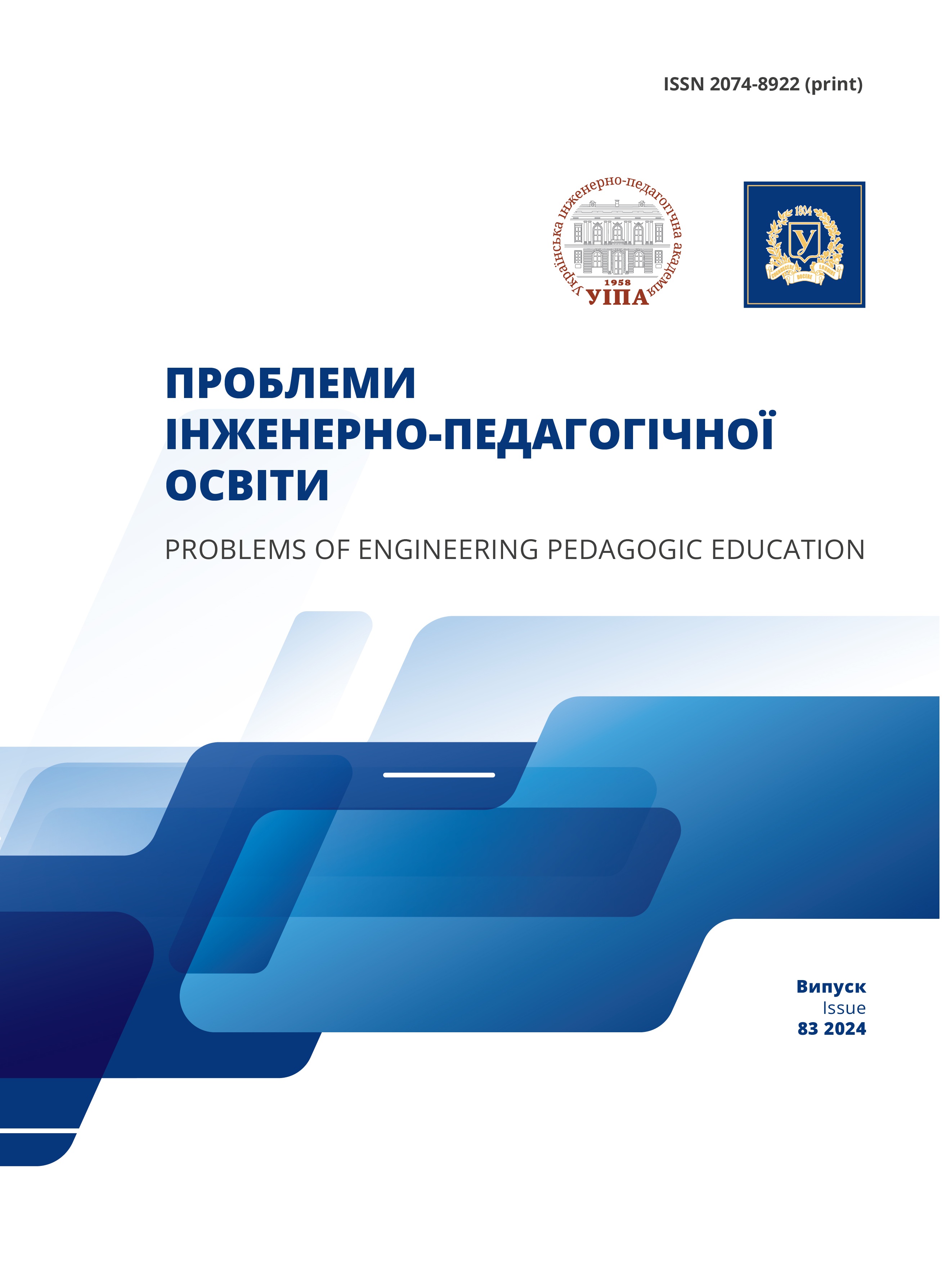БІЛІНГВАЛЬНА ОСВІТА - ВАЖЛИВА СКЛАДОВА ОСВІТНЬОГО ПРОЦЕСУ У ЗАКЛАДАХ ВИЩОЇ ПРОФЕСІЙНОЇ ОСВІТИ
Анотація
DOI: https://doi.org/10.26565/2074-8922-2024-83-04
У статті проведено ґрунтовний аналіз розвитку білінгвальної освіти в закладах вищої освіти та розглядається, які вона має переваги в процесі підготовки фахівців для глобального ринку праці. Окремо обговорюється концепція багатомовної освіти Ради Європи та її застосування в контексті вищої освіти. У статті підкреслюється важливість Загальноєвропейських рекомендацій з мовної освіти (CEFR) в оцінюванні мовних навичок студентів і роль мовного портфоліо в оцінюванні їхнього багатомовного досвіду.
У роботі обговорюються різні підходи до викладання мов у контексті білінгвальної освіти, зокрема компетентнісний, міждисциплінарний, когнітивний та діяльнісний, які мають на меті допомогти студентам ефективно вивчати професійну термінологію кількома мовами. Компетентнісний підхід наголошує на розвитку ключових комунікативних та професійних навичок, необхідних для успішної діяльності в багатомовному середовищі. Міждисциплінарний підхід поєднує мовні навички з професійними знаннями, дозволяючи студентам застосовувати вивчене в різних контекстах. Когнітивний підхід фокусується на покращенні усвідомлення навчання через розумові процеси, тоді як діяльнісний підхід заохочує самостійну роботу та розвиває навички самонавчання студентів.
Автор наголошує, що білінгвальна освіта має важливе значення для того, щоб допомогти студентам розвинути навички, необхідні для міжнародних проєктів та командної роботи. Це покращує їхню міжкультурну комунікацію та заохочує інноваційне мислення. Технічні університети покращують мовні навички та професійні компетенції студентів, готуючи їх до успіху в конкурентному світовому ринку праці, де цінується багатомовне спілкування. Запроваджуючи білінгвальну освіту, навчальні заклади, по суті, готують своїх випускників до майбутнього, де адаптивність і міжкультурна співпраця мають першорядне значення. Такий підхід приносить користь як окремим студентам, так і допомагає створити більш інклюзивну глобальну спільноту.
Як цитувати: Zelenin H. Bilingual education is an important component of the educational process at higher educational institutions. Problems of Engineering Pedagogic Education, (83), 42-49. https://doi.org/10.26565/2074-8922-2024-83-04
Завантаження
Посилання
Anderson, P. (2002). Assessment and development of executive function (EF) during childhood. Child Neuropsychol, 8(2), 71–82. DOI: https://doi.org/10.1076/chin.8.2.71.8724
Abdelgafar, G. M., Moawad, R. A. (2015). Executive function differences between bilingual arabic-english and monolingual arabic children. J. Psycholinguist. Res, 44, 651–667.
DOI: https://link.springer.com/article/10.1007/s10936-014-9309-3
Bialystok, E., Feng, X. (2009). Language proficiency and executive control in proactive interference: Evidence from monolingual and bilingual children and adults. Brain Lang., 109 (2-3), 93–100. DOI: https://doi.org/10.1016/j.bandl.2008.09.001
Leikin, M. (2013). The effect of bilingualism on creativity: Developmental and educational perspectives. Int. J. Biling., 17(4), 431–447. DOI: https://doi.org/10.1177/1367006912438300
Janus, M., Bialystok, E. (2018). Working memory with emotional distraction in monolingual and bilingual children. Front. Psychol, 9:1582.
DOI: https://doi.org/10.3389/fpsyg.2018.01582
Gangopadhyay, I., Davidson, M. M., Weismer, S. E., Kaushanskaya, M. (2016). The role of nonverbal working memory in morphosyntactic processing by school-aged monolingual and bilingual children. J. Exp. Child Psychol, 142, 171–194.
DOI: https://doi.org/10.1016/j.jecp.2015.09.025
European Language Portfolio: propositions for elaboration / I. Christ et al. Strasbourg: Council of Europe Press, 1997. 120 p. https://www.coe.int/en/web/portfolio/elp-related-publications
Common European Framework of Reference for Languages: learning, teaching, assessment / Council of Europe. Cambridge: Cambridge University Press, 2000. 260 p. https://www.coe.int/en/web/common-european-framework-reference-languages
Bryntseva, O. (2020). Foreign languages as means of students’ professional mobility development. Pedagogy of forming a creative personality in higher and secondary schools, 68(1), 212-216. DOI: https://doi.org/10.32840/1992-5786.2020.68-1.43 (in Ukrainian).
Liu, X., Nie, J. (2024). The influence of bilingualism and bidialectalism on executive control: evidence from a short-term language switching training paradigm. International Journal of Bilingual Education and Bilingualism, 27(10), 1324–1341.
DOI: https://doi.org/10.1080/13670050.2024.2344098
Zeynali Hamied, R., Modirkhamene, S. (2024). EFL learners’ short-term and long-term memory: does learning additional languages matter? International Journal of Multilingualism, 1–15. DOI: https://doi.org/10.1080/14790718.2023.2294955
Šifrar Kalan, M., Muñoz-Basols, J., Robles-García, P., Strawbridge, T., Sánchez-Gutiérrez, C. (2024). The impact of multilingualism and proficiency on L2 vocabulary knowledge: contrasting high and low multilinguals. International Journal of Multilingualism, 1–24.
DOI: https://doi.org/10.1080/14790718.2024.2314626
Gartziarena, M., Villabona, N., Olave, B. (2023). In-service teachers’ multilingual language teaching and learning approaches: insights from the Basque Country. Language and Education, 38(2), 203–217. DOI: https://doi.org/10.1080/09500782.2023.2176714
Lasagabaster, David. (2000). The effects of three bilingual education models on linguistic creativity. International Review of Applied Linguistics in Language Teaching, 38(3-4), 213-228. DOI: https://doi.org/10.1515/iral.2000.38.3-4.213
Kemp, C. (2007). Strategic processing in grammar learning: Do multilinguals use more strategies? International Journal of Bilingualism, 4(4), 241–261.

